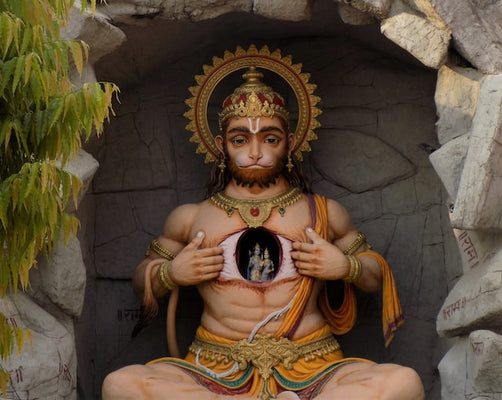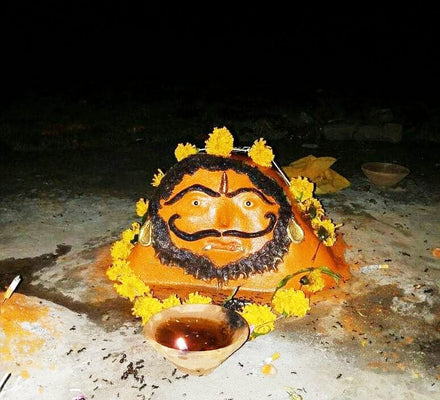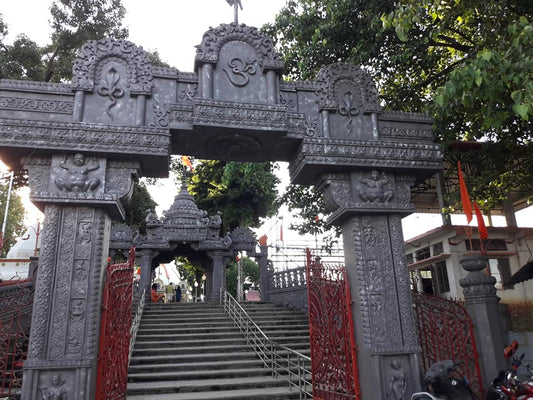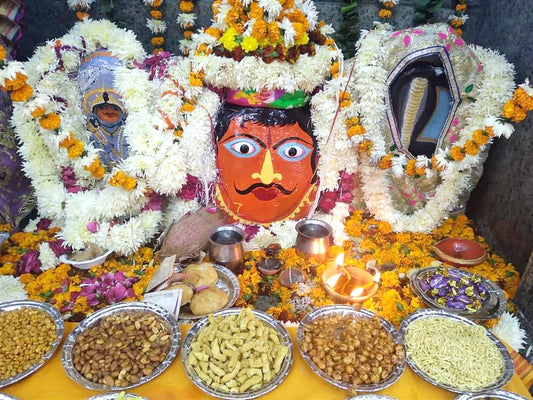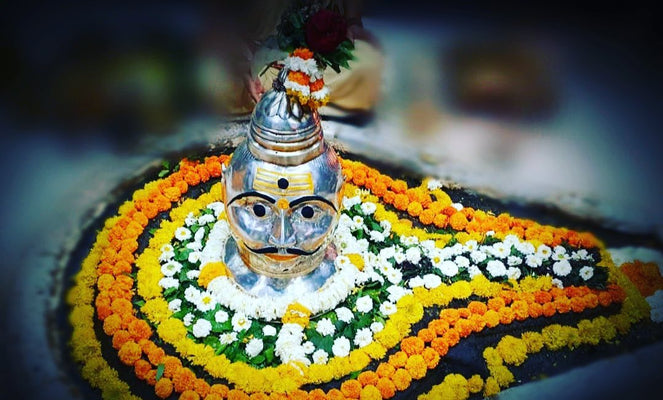Shri Rameshwaram Jyotirlinga Temple
Shri Ramanathaswamy Temple at Rameshwaram is an important pilgrimage site for the followers of Hinduism. It is believed that a visit to this temple washes away one's sins and brings salvation (moksha). Located on an island off the Sethu coast of Rameshwaram, Shri Ramanathaswamy Mandir can be reached via Pamban Bridge across the sea. Being situated in Rameswaram, the shrine is popularly known as Rameshwaram Temple. Rameswaram is a town in Ramanathpuram district of Tamil Nadu. The town is particularly famous for its religious shrine of Ramanathaswamy. The nearest airport to Rameshwaram is located at Madurai, which lies at a distance of 163 kms. One can easily reach Rameshwaram by taking regular tourist buses or by hiring taxis from all the major cities of Tamil Nadu including Madurai, Chennai and Trichy.
The construction of this temple began in the 12th century; nonetheless it was completed much later, during the reign of various rulers. Rameshwaram Temple is famous for embracing one of the twelve Jyotirlingas (lingam of light) of Lord Shiva. The temple is also accredited for being the southern most 'jyotirlinga' of India. It is believed that at this place Lord Rama offered his gratitude to Lord Shiva.
The Lingam of Ramanathaswamy is the presiding deity of Rameswaram Temple. The religious significance of this shrine has made it, one of the most visited temples of India. Rameshwaram (South) is one of the four major pilgrimage sites of Hindus, the other being Puri (East), Dwarka (West) and Badrinath (north). The main shrine adores the idols of Viswanatha Naicker and Krishnama Naicker.
In the inner section of the Ramalingeshwara, Ramalingam and Vishvalingam are placed side by side. Preserving the words of Lord Rama, Vishvalingam is worshipped before Ramalingam. Maha Shivarathri, Thirukalyanam, Mahalaya Amavasai and Thai Amavasai are the major festivals that are celebrated with gusto and fervor.
Legend
Ramanathaswamy Temple is closely linked with the great epic Ramayana. As per the legend, it is believed that Lord Rama worshipped Lord Shiva here, on his victorious return from Sri Lanka. As the legend goes, Sages (Rishis) counseled Lord Rama (along with Sita and Lakshmana) to install and worship the 'Shivalingam' at this place, to compensate the sin of Brahmahatya (killing of a Brahmin). Lord Rama approved the idea and fixed a favorable time for the installation of Shivalingam.
He sent Lord Hanuman (Anjaneya) to bring a 'lingam' from Mount Kailash. Lord Hanuman could not return in time and it was getting late. Apprehending the situation, Sita herself made a 'linga' of sand and Lord Rama installed the same. When Hanuman came back with the 'linga', the formal procedures of installation were over. Lord Rama consoled the disappointed Hanuman and installed his lingam (Visvalingam) next to Ramalinga. He enhanced the sanctity of lingam by ordaining that the rites would be made first to the Visvalingam.
About Temple
The temple had humble beginnings with an ancient shrine housed in a thatched hut until the 12th century. The first ever masonry structure was built by Parakrama Bahu of Sri Lanka. The Setupathy (architects and stone masons) rulers of Ramanathapuram completed the rest of the temple. Although manly Dravidian in style some of the temple vimaanams resemble the Vimaanams of the Pallava period. The temple has also received royal patronage from several kingdoms such as Travancore, Ramanathapuram, Mysore and Pudukkottai. Much of the additions were carried out between the 12th and the 16th centuries. The long corridor (3rd prakaram) dates back only to the 18th century.Stretched over a vast area of 15 acres, Rameswaram Temple is the typical specimen of Dravidian style of architecture. The skyscraping gopurams (spires) truly dominate the skyline of Rameshwaram. The shrine is acknowledged for having the largest temple hallway in India. This pillared corridor extends to 4000 feet in length, embracing more than 4000 pillars. Erected on a raised plinth, granite pillars are intricately carved with beautiful images. A hard fact about this corridor reveals that the rock doesn't belong to the island and it was imported from somewhere across the sea.
The main entrance of the temple tower has many storeys and stands tall. Its structure carvings, statutes and the peaks make people dumb founded. The grandeur of the Lord is really felt here. The human weakness for being narrow-minded is automatically removed and they feel their horizons broadened. On the tall stone pillars of temple, beautiful carvings can be seen. Elephants with their trunks raised are seen. The four sides of the temple are enclosed by strong stone walls. They are 650 ft. and 12ft. wide and tall respectively. This wonderful temple built on the sand island, is a work of great art and very impressive. Near to a gold plated pillar, a river is carved on a monolithic stone of 13 feet high and a foot wide. This indeed is a typical example of beautiful sculpting.
Near the main temple of Rameshwar, there is a separate temple for Parvati known as Parvatavardhini temple. Besides this, there are temples of Santana Ganapati, Veerabhadra Hanuman, navagrahas, etc., At a distance of about nearly 2 kilometers from the main temple, there is Gandhamaadhan mountain. In spite of being a sandy area, it is very green with a variety of flora. This is the Nandanavan of Rameshwar.
Encompassing nine levels, the eastern Rajgopuram (spire) soars to the height of 126 feet. However, the western 'gopuram' is not as high as the eastern 'gopuram', still it is equally captivating. The temple comprises numerous 'mandaps' having small shrines, dedicated to other deities. The colossal image of Nandi (Lord Shiva's Bull) captures the attention, due to its sheer size. It measures 12 feet in its length and 9 feet in its height. High fortifications encircle the temple, making a rectangle along with big pyramidal 'gopura' doorways on every side. Ramanathswamy Temple has twenty two wells in its complex. Being the main attraction of this temple, the wells are also recognized with their distinct properties. All of these wells have water of different taste, temperature, salinity and have curative properties as well. It is said that these wells were made by Lord Rama himself, when he fired arrows in the sand.
There are 36 Theerthams in Rameshwaram of which 22 are in the temple. The waters possess medicinal properties and bathing in these is considered to be of great significance. The Agni theertham refers to the ocean (the first well) while the Koti theertham is located within the temple itself.
Ramanathaswamy Temple also has its name in history books as it has the largest hallway anywhere in India. The construction of Ramanathaswamy Temple which began in the 12th century was contributed to by many rulers. During its construction period, many dynasties came and fell and each of them put their input into the temple. However one thing that did not change was its Dravidian style of architecture. Ramanathaswamy Temple is an epitome of Dravidian architecture. The list of unique features in its construction seems to be endless. The temple is spread over an area of 15 acres, has lofty gopurams, massive walls and a collossal Nandi. The stuccoed image of Nandi is about 6 metres tall and 7 metres in length.
There is this huge pillared corridor that is of approximately 1220 meters in length. Throughout the length of the hall, there are 4,000 brilliantly carved pillars, the alignment of which will leave you totally amazed. The carved granite pillars are mounted on a raised platform. What is unique about this corridor is that the rock is not indigenous to the island and it was brought in from elsewhere in Tamilnadu across the sea.The 54 meter tall Gopuram has become the symbol of divinity in the heart of many pilgrims; such is the beauty and presence of it. This Gopuram has nine levels. The Western Rajagopuram, though impressive, is not as tall as the Eastern one.
It is said that the ancient shrine was placed in a thatched hut until the 12th century. Parakrama Bahu of Sri Lanka built the first ever masonry structure here. The Setupathy rulers of Ramanathapuram completed the rest of the temple. Some of the temple vimaanams are similar to the Vimaanams of the Pallava period. Much more was added to the temple between the 12th and the 16th centuries. The long corridor (3rd prakaram) dates back only to the 18th century. The Gandhamadhana Parvatam (hill) offers a panoramic view of the temple. Travancore, Ramanathapuram, Mysore and Pudukkottai kingdoms provided royal patronage to this famous Hindu temple.
Special to Devotees of Lord Shiva and Lord Vishnu equally
The Shivastalam is considered to be one of the holiest shrines in India. It represents the southernmost of the 12 jyotirlingas of India and has been a time honored pilgirmage center held on par with Benares. The island-temple town is located off of the Sethu coast of Tamilnadu (south eastern). This shrine is regarded as the 8th of the Tevara Stalams in the Pandya region of Tamilnadu.This temple is associated closely with the Ramayana and Rama’s victorious return from Sri Lanka. Rama worshipped Shiva in the form of a Shiva Lingam made of earth by Sita, while returning to Ayodhya. Hanuman was entrusted with the task of bringing an image of Viswanathar from Benares. Anticipating delay in Hanuman’s return from Benares, Rama is said to have offered worship at a pre-chosen auspicious moment to a Shivalingam fashioned out of earth by Sita. This lingam is referred to as Ramalingam. There is yet another Shivalingam here – Viswanathar, said to have been brought by Hanuman from Banares. This Shivalingam is referred to as Kasilingam and Hanumalingam. Prayers are offered to Viswanathar before they are offered to Ramanathaswamy.Rama also worshipped Tilakeswarar at Devipatnam nearby enroute to Sri Lanka.There is also a shrine to Sethu Madhava and Lakshmi in Rameswaram. Sethu Madhava is also referred to as Sweta Madhava, the term Sweta referring to the white stone with which the image is made. The Gandamadana parvatam is a hill on the island which bears a small shrine containing imprints of Rama’s feet held in worship.
Places to visit near by Agnitheertham - The Agniteertham is located at a few meters from the Ramnathswamy temple. It is believed to be located at the same spot where Rama worshipped Lord Shiva.
Gandamadana Parvatham - This sacred shrine holds a wheel with the footprint of Lord Rama. The shrine stands on the highest point on the island, around 2 kms from Rameshwaram.
Ramjharoka Temple - The footprints of Lord Rama is placed on a Chakra at the Ramjharoka Temple. The chakra has been placed at the highest point of Rameshwaram. This point is at a distance of 5 kms from Rameshwaram town. Since it is the highest point of Rameshwaram, therefore it provides a fantastic view of the blue ocean waters below.
Dhanushkodi - Dhanushkodi is located at the eastern end of the island. It is named after Lord Ram's bow and is at a distance of 8 km from Rameshwaram. The boulders in the sea between Sri Lanka and Dhanushkodi are known as Adam's bridge. It is believed that Lord Rama used them to reach across Sri Lanka. Danushkodi is about 18 miles West of Talaimannar in Jaffna, Ceylon. Before 1964 storm there was a train service up to Danushkodi called Boat Mail from Chennai Egmore, the train linked a steamer to Ceylon. During the 1964 storm a huge wave of about 20 ft came crashing on the town from Palk Bay/Strait east of the town and destroyed the whole town, a train, the Pamban Rail Bridge etc all happened at the dead of the night. Danushkodi has the only land border between India and Ceylon which is one of the smallest in the world just 50 yards in length on a sand dune in Palk Strait. The Government of Madras declared the town as Ghost town and unfit for living after the storm, now a small group of fisher folk resides there. Buses (Rs 5, hourly) from the local bus stand on East Car St stop about 4 kms before the beach so you have to walk the rest of the way. Otherwise, an auto rickshaw (45 minutes one way) costs Rs 250 return, including one hour waiting time.
Getting there and Around
By Air - The nearest airport is at Madurai, at a distance of 154 km
By Rail - Rameshwaram is well connected by trains from all the major cities of India.
By Road - State transport buses are available from the railway station to the various places in and around Rameshwaram. For local transportation taxis, auto-rickshaws, cycle-rickshaws and tongas are available. Also city bus service is available in the island.







